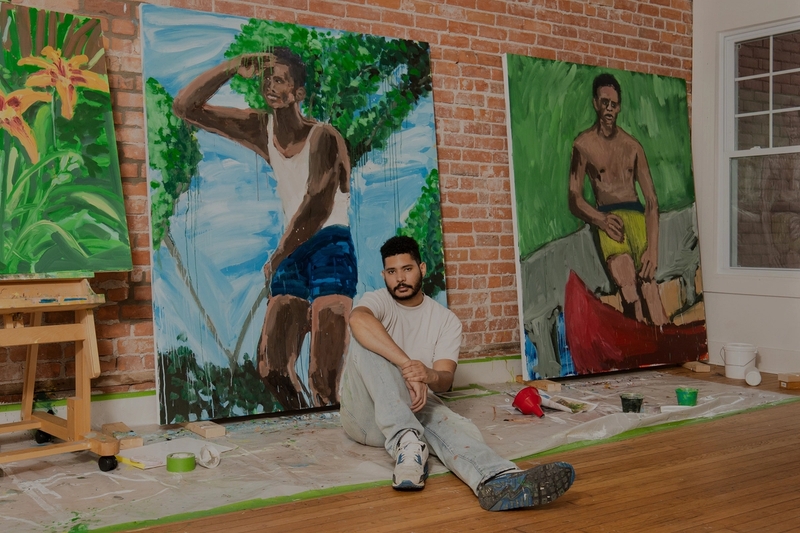
Anatomy is a platform that dissects and narrows in on the various parts of an artist’s practice through the lens of their studio. This presentation provides a glimpse into an artist’s background and process through a multimedia tour including video, audio clips, imagery, and conversations with fellow artists, curators, and other figures who have been influential in shaping and understanding these creators and their works. Anatomy's intent is to examine the myriad of ways in which an artist finds inspiration, merges art and life, and is driven by experience and the people that come into their world. We hope that this glimpse into the lifeblood of the artist’s practice will affect an even deeper reading of the works included and those yet to come.
Background
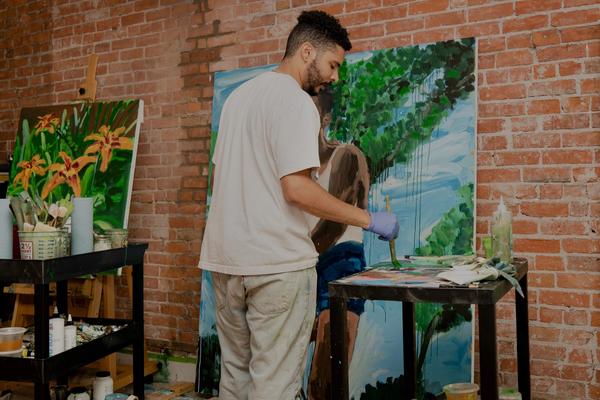
Anatomy: Paul Verdell features 11 new works by the Detroit-based artist, who approaches his drawings and paintings of portraits, figures, and still lifes through expressive and instinctual mark-making. Post-Impressionist and Fauvist influences are apparent through the abandonment of precision in favor of a more fluid form of figurative work, where vibrant colors become flesh and limbs, and figures merge with their surroundings. The artist’s tendency towards working quickly to capture emotion results in works with varying exposures of paper or canvas between the strokes and fields of color. This lightness is a prominent characteristic of his unique style, inspiring a feeling of ephemerality and fleeting exchange, and allowing the viewer space to explore. A closeness to his subjects and a desire to work from live models characterize an autobiographical approach, where each piece becomes a chapter in a lifelong anthology of relationships, conversation, and intimate connection.
Inspiration
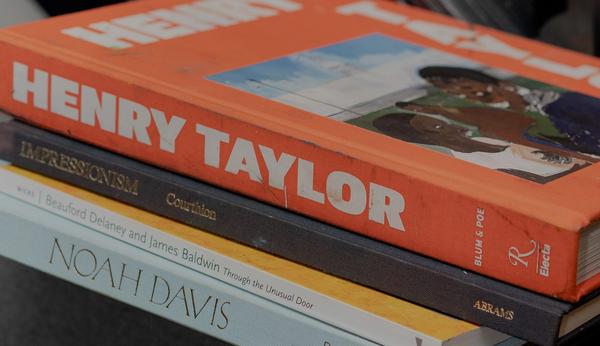

Beauford Delaney
Self Portrait, 1962
Oil on canvas
23h x 19w in
Courtesy of Founders Society Purchase, City of Detroit by exchange
Verdell’s work follows a lineage of pure portraiture, where little to no narrative is present and the work focuses fully on the artist’s interpretation of the sitter’s spirit and physicality. His strongest influence from art history is the short story of the Fauves, a group of early 20th-century artists whose works emphasized painterly qualities and strong color over the representational values retained by Impressionism. Leaders in this movement were Henri Matisse and Andre Derain. The electric colors they celebrated were made possible through advances in industrial manufacturing, which created the brightest pigments yet available. Their works were first displayed in 1905 in the Mediterranean village of Collioure and the unnatural hues led critic Louis Vauxcelles to derisively call them ‘les Fauves,’ or ‘the Wild Beasts;’ others called them ‘Incohérents’ (‘Incoherent’). The wildness of the works lay in their aggressive execution, celebrating an impetuous brush stroke and emotional interpretation of color that created simplified, almost abstract landscapes, street scenes, and portraits. Some 30 years later, the influence of the Fauves became apparent in one of Verdell’s favorite painters, Beauford Delaney, who was born in Knoxville, TN and made his way to New York during the Great Depression. Delaney was an important figure in the Harlem Renaissance and his works expressed “not only the character of the city, but also his personal vision of equality, love, and respect among all people.” Raised catholic and living in a time that was especially unkind to Black people and homosexuals, Delaney created deeply emotional works, and is known in particular for his paintings of writer James Baldwin, whom he adored. According to BlackArtStory.org—an online publication dedicated to telling the story of overlooked and underappreciated Black Artists—“Delaney’s paintings seem to say, 'I may be suffering, but what an experience this is.'” Contemporary influences in Verdell’s practice include Henry Taylor, Noah Davis, and Jennifer Packer.
“[Beauford Delaney's] work was very colorful and he was doing paintings of his friends. He was trying to capture the person’s essence and to me, that spoke really loud and that’s where I started going into the work. I wanted to start capturing the essence of the person, the plant and be able to experience color more. ”
— Paul Verdell

Henri Matisse, 1905
Oil paint on canvas
18.11h x 13.7w in
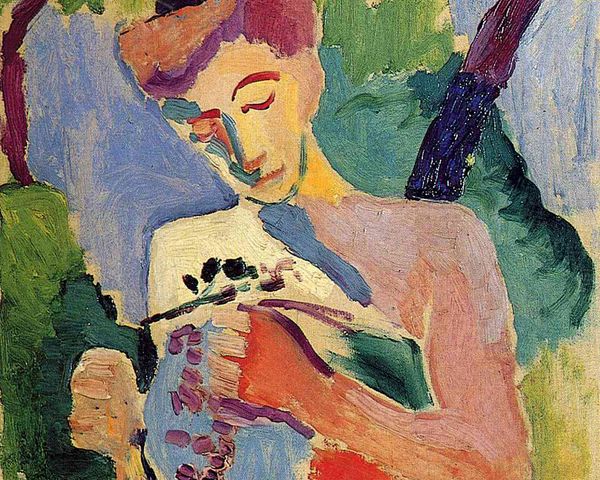
Branch of Flowers, 1906
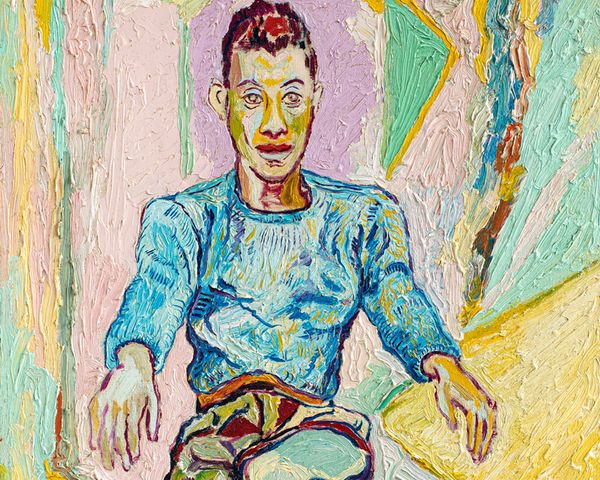
Portrait of James Baldwin, 1955
Oil on canvas board
24h x 18w in
Courtesy of the Estate of Beauford Delaney
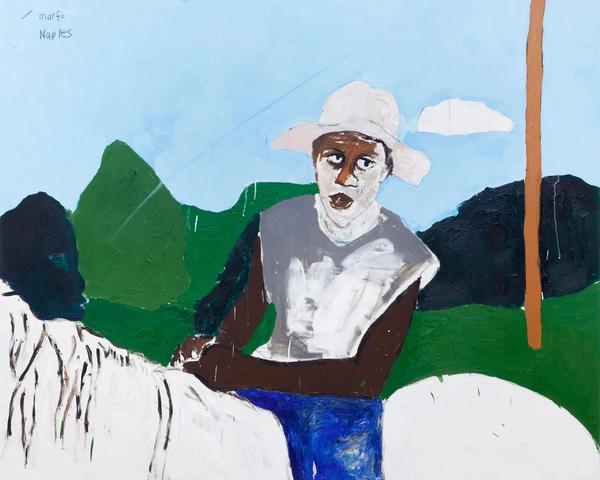
Man on Horseback in Naples, TX, 2015
Acrylic on canvas
58.25h × 69.75w in
Courtesy of the artist and Blum and Poe
Artwork
For Verdell, it is the presence of the subject during their sitting that guides the conceptual framework and psychology of each piece. When the artist paints from live interactions, he engages in conversation with his sitter, and as a result, the tone of the discussion and spirit of the individual permeates the work. Though the core of Verdell’s practice consists of works of pastel on paper, the artist approaches movement and color in his paintings in a similar manner, where loose, open gestures are layered and dripping to indicate the same vitality. During the pandemic, Verdell found himself with less access to live sitters and instead turned to old images of his family, some dating back to the youth of his great grandfather. For an artist who aspires to explore and discover the essence of his live models, this use of old photographs of distant family members could seem antithetical; however, a closer look draws parallels in analysis, intuition, and imagination. Verdell describes painting as a “constant search,” and this foray into his family history has brought about works that feel as deeply connected to lineage as they do to the unknown.
Reunion
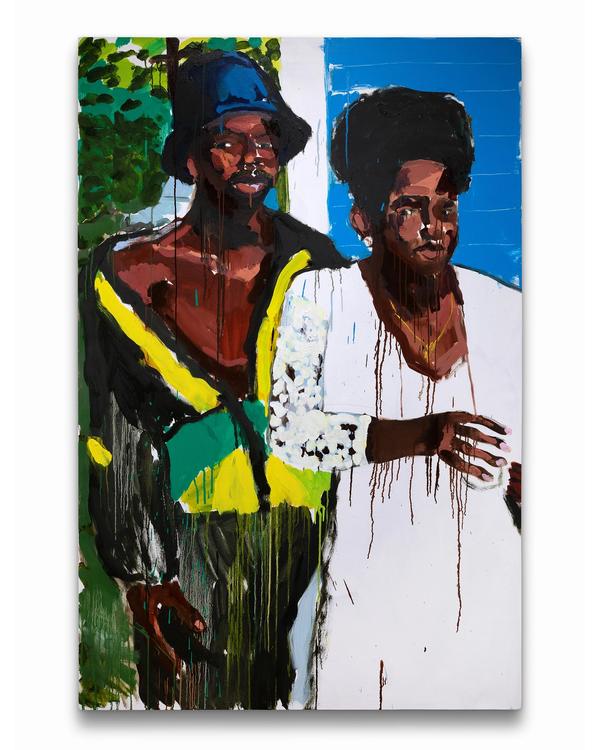
Reunion, 2021
Oil on Linen
69h x 45w in
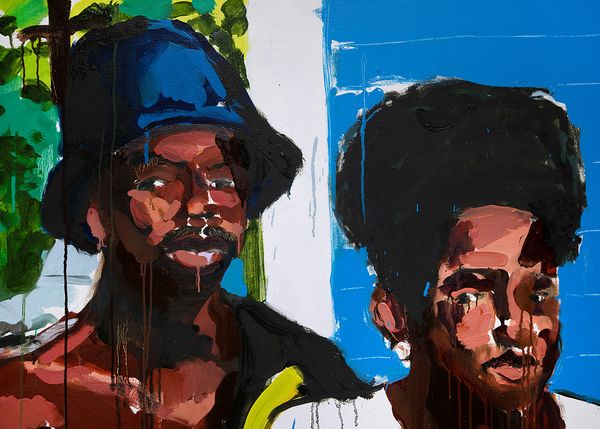
Listen to Verdell reflect on this painting
0:00 |
Reunion features distant family members Verdell paints from a reference image shared with him by his mother, which was taken at a wedding they attended when Paul was a child in the early 1990s. As with a number of the works he created for Anatomy, the artist looks to the imagery of a side of his family he never really knew, imagining personalities and spirits that are revealed as he paints. Verdell is energized by the opportunity to include clothing and other markers that place his works in a moment in time; the bucket hat and tracksuit are considered both retro and of-the-moment due to the cyclical nature of fashion. For a young artist, these indications inspire both nostalgia and contemporaneity. Verdell’s dripping paint stroke translates within the works as a glimpse into his process, using layers of diluted paint that bleed together as they are built. Oil is loved by many painters for its characteristic slippery and viscous appearance that is better retained after drying than with acrylic, and Verdell’s treatment of his canvases successfully capture and maintain a feeling of fresh application. As a result, he is able to powerfully communicate an ephemeral, fleeting memory that materializes, shifts, and fades away.
Cyd
Cyd features a Detroit-based artist that Paul met soon after moving to the city. The two were supportive of one another’s works over social media, and Verdell invited Cydney to sit for him just as she was about to begin her MFA in painting at the Cranbrook Academy of Art this past fall. The figure’s kindness and quiet spirit seems to glow from inside, echoed in the bright pink background that permeates her flesh and blue shirt. Verdell is adept at working with a sitter and learned over time to paint a developed study while also taking cues from his guest regarding their preference for silence or conversation. After the sitting, he builds the work further through memory and intuition or may reference images taken during the session.
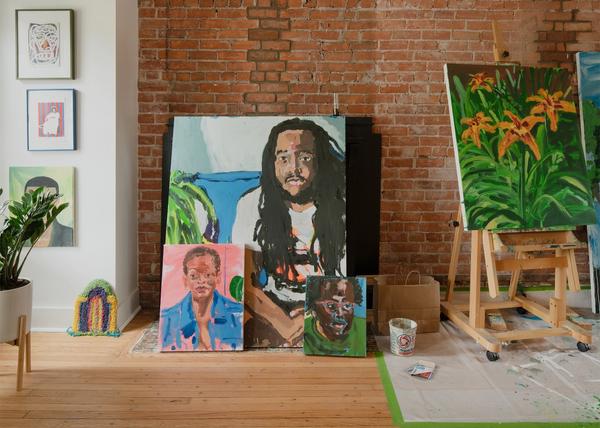
Day Dream and Self Portrait
Though he admits to avoiding the self portrait early on, Verdell began to make small paintings and drawings of himself during the early stages of the pandemic when it was particularly difficult to have visitors to his studio for live sessions. In tackling his own likeness, the artist has come to an even deeper understanding of the multitude of ways in which a singular figure can be portrayed through art. Differing moods, states of mind, and times of day are only some of the many variables that can greatly affect the composition and palette of a finished work, and Verdell feels that his ability to perceive these intricacies only continues to grow with each attempt. With Day Dream and Self Portrait, we are presented with two works drawn from a vast spectrum of color and light, where a scene captured with cool indoor lighting is set against one of a hot summer day en plein air.
Searching for Cicadas
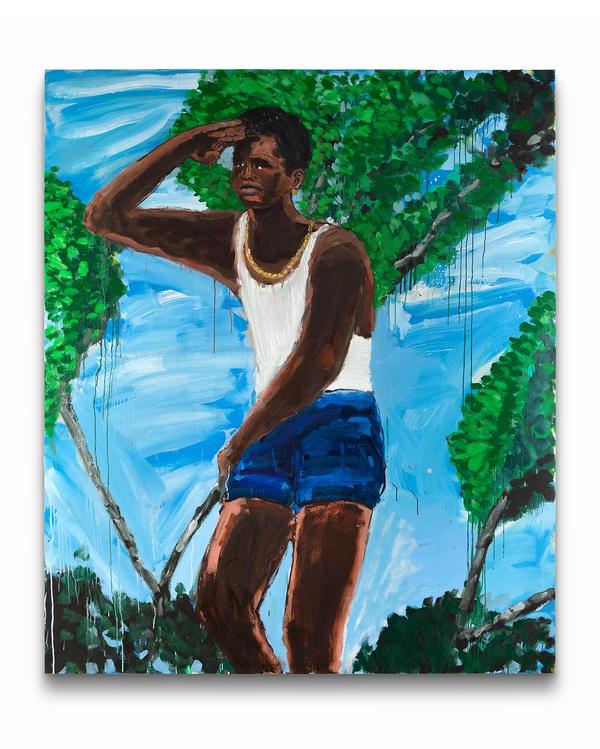
Searching for Cicadas, 2021
Oil on Linen
72h x 60.5w in
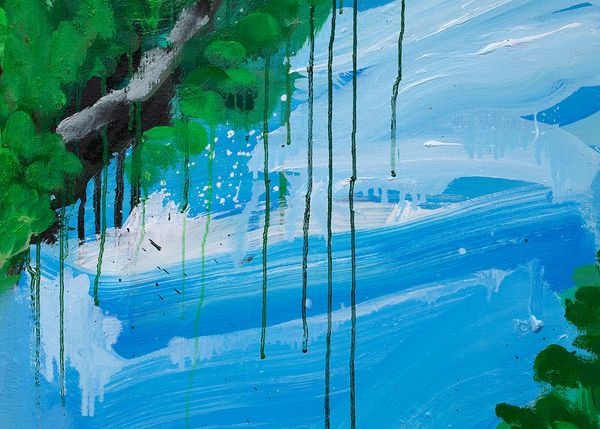
Listen to Verdell reflect about this painting
0:00 |
Searching for Cicadas features a man high in the trees of the Florida Everglades, based on a photo of his maternal great-grandfather. An artist of mixed race and the son of a single mother, Verdell knows little about his father’s side and family history. Here, he uses available imagery of his white ancestor to envision and paint his Black heritage. At least a century old, the reference image is in black and white but he paints a palette of cool blues and greens that place emphasis on the warm tones of the figure’s flesh. The work was painted during the summer of 2021, when cicadas emerged across the US after 17 years underground. Like other recent works, Verdell interprets his past through a lens of the present, where chaotic brush work and dripping oil paint lends to the disruption and dissolution of memory.
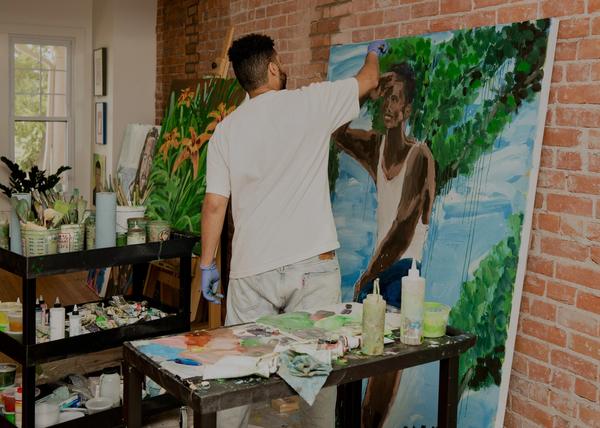
Jay at Home
Jay at Home features a long-time friend of the artist at his home in Toledo, OH. The two met years ago when Jay curated a group art exhibition in Verdell’s home town, which was the first time he showed his art to the public as an undergraduate student. Jay is a fashion designer with a love for Takashi Murakami, and a pillow designed by the artist can be seen peeking through the leaves of a nearby houseplant. The work is a rainbow of saturated colors and high contrast, and pinks and purples peak through as highlights on the figure’s face. A strong example of Verdell’s neo-expressionist and fauvist influences, paint is applied as facets and planes of color that maximize luminosity and blend optically (called divisionism), rather than through physical mixing that creates gradation but can dull color.
Darryl Seated
Verdell enjoys having other artists sit as models for his drawings and paintings, as they are often so familiar with the process of working from a live figure and the importance of patience and vulnerability in a sitter. Darryl is a photographer and curator, and their session took place just before they left Detroit for Senegal to take part in the Black Rock Artist Residency. Although their bag is in view by chance, its placement in hindsight seems to reference a moment in time in preparation for travel and personal and creative growth. The drapery of the figure’s green shirt seems to melt as it falls downward to their lap, with the stairs behind like puddles of blue. Verdell often uses the tip of his brush handle to scrape out tighter lines, visible in the cuffs of the shirt and floorboards. This technique allows him maximum freedom in the quick and heavy application of paint, with details subtracted from thick pools of color after they are laid down.
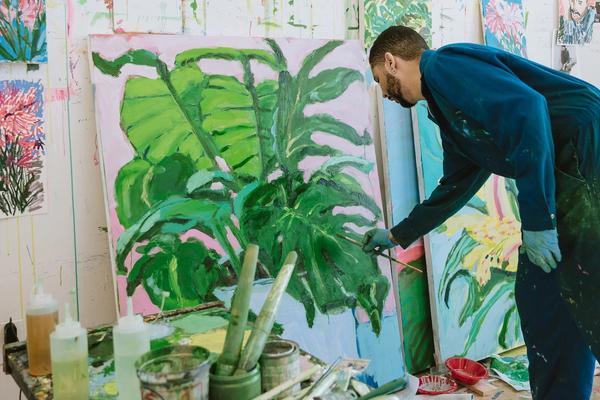
Sunroom Fig and Lillies
In the tradition of many historical portrait and landscape painters, Verdell sometimes turns his brush to still lifes. He has a personal love for growing and tending to house plants, and florals catch his eye when he is out on runs in the neighborhood surrounding his studio. These natural subjects allow him the opportunity to paint even more loosely from reference, laying in a quick generalization of the form where repetition of leaves and flower petals leave room for a high level of improvisation. The blue pot in Sunroom Fig was painted by first laying down dense layers of various tones before Verdell manipulated the oil with his hands, spreading it across the canvas with his fist. These moments of freedom are critical to the artist’s practice, where the acceptance of instinct and experimentation promotes feelings of purpose and joy.
Whisperer
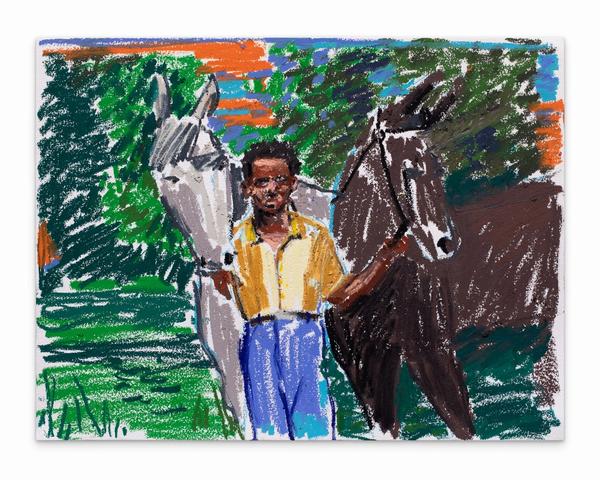
Whisperer, 2021
Oil pastel on paper
12.25h x 16.25w in
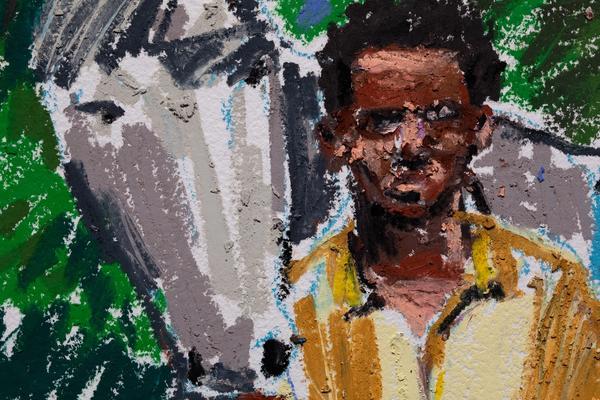
Listen to Verdell reflect on this painting
0:00 |
Verdell’s works of oil pastel on paper are at the root of his practice, and his comfort with the material is apparent in the agility of his mark making. His ability to work quickly captures emotion and impermanence and results in the works presenting varying exposures of paper between the strokes and fields of color. This lightness is a prominent characteristic of his unique style of drawing and sets the figure within its background. Whisperer features another interpretation of his father’s distant family; his great grandfather leading two horses within a lush landscape. From time to time, Verdell executes his drawings in crayon to maintain a childlike connection to his practice that helps to remind him of the joy that art has brought him from a young age. As a result, his works on paper maintain a youthful exuberance that he consistently strives to carry into painting and his life as a whole.
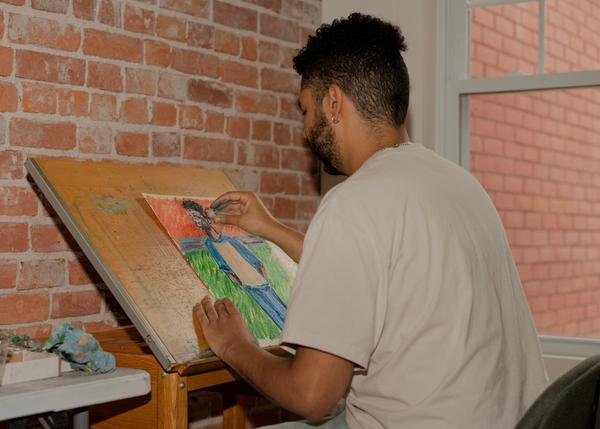
Sunday Service
Sunday Service is a tightly cropped portrait of a sitter who visited Verdell’s studio a few years back. At the time, he took images of the model but hadn’t gotten to paint her until this year, when in-person visits were difficult and he found himself going through earlier reference imagery for subjects. The figure holds the cross hanging from her necklace and gazes into the distance. This action, coupled with Verdell’s painting of the work on a Sunday afternoon, prompted a title that colors the reading of the work. As such, her eyes and pose suggest an air of contemplation and reverence.
Conversations
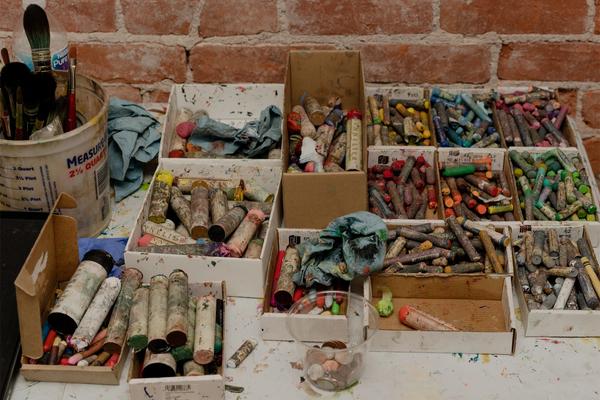
Jammie Holmes, Artist
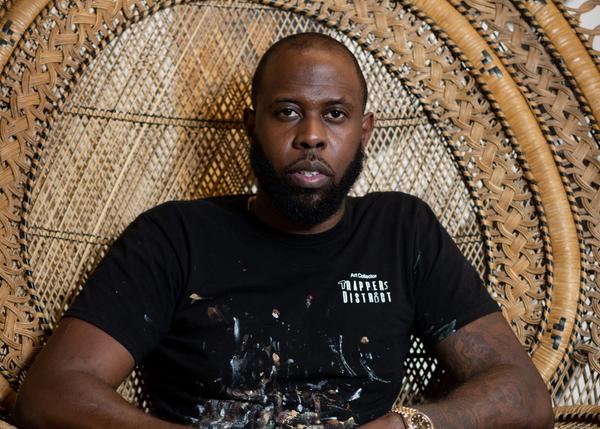
Jammie Holmes is a self-taught, neo-expressionist painter with a raw and energetic portfolio of work that addresses religious, political, and contemporary issues. Born in Thibodaux, Louisiana, the artist is currently based in Dallas, Texas. With Holmes being a self-taught artist and Verdell formally trained, the two reflect on their creative journeys, and the pros and cons of each route. Despite differences in path, the conversation focuses on the many similarities that exist between the two artists and their practices: Holmes and Verdell discuss the act of making art to deeper understand themselves, their mutual rejection of realism and how that relates to identity, and the need to reference the past in order to propel forward.
“What I admire most in Paul’s work is the freedom he brings to it. He paints how he feels and what is inside him.”
— Jammie Holmes
Jova Lynne, Artist and Curator

Jova Lynne is a multidisciplinary conceptual artist and curator based out of Detroit. Lynne moved to the city in 2015 to pursue a Masters of Fine Arts in Photography at Cranbrook Academy of Art, and is currently the Susanne Feld Hilberry Senior Curator at the Museum of Contemporary Art Detroit (MoCAD). The Detroit-based artists sit down in Verdell’s studio to discuss the mutual impact that the Midwest has had on their respective practices, as well as Verdell’s process of painting and drawing live models. Lynne dives into Verdell’s past to understand his current position in the world of contemporary art, along with his goals and hopes for the future.
“[Paul’s] work is derivative of very established, mostly Black painters, and I think that that’s important work, and being in the contemporary landscape, [he’s] adding to that legacy and to that canon.”
— Jova Lynne
James Whitner, Entrepreneur and Art Collector

James Whitner is a fashion entrepreneur and art collector, as well as the founder and owner of retail conglomerate The Whitaker Group. Whitner uses his platform and stores to empower his community, support artists, and shine a light on the underserved. An instant bond is formed between Whitner and Verdell as they discuss the interconnectivity between streetwear, art, and Verdell’s practice. Their conversation highlights the importance of activating personal and shared space through art as a means of healing and thriving, and also touches on the importance of recognizing and supporting young talent, now more than ever.
“What I see in [Paul’s] work is parts of my life, places and people that are familiar, and things that connect to who I was but can also inspire who I want to be.”
— James Whitner
Studio Visit
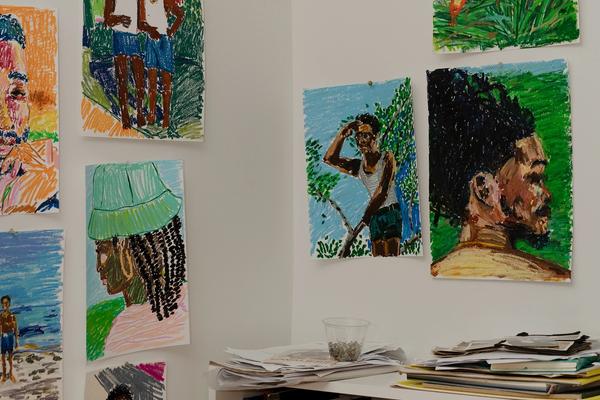
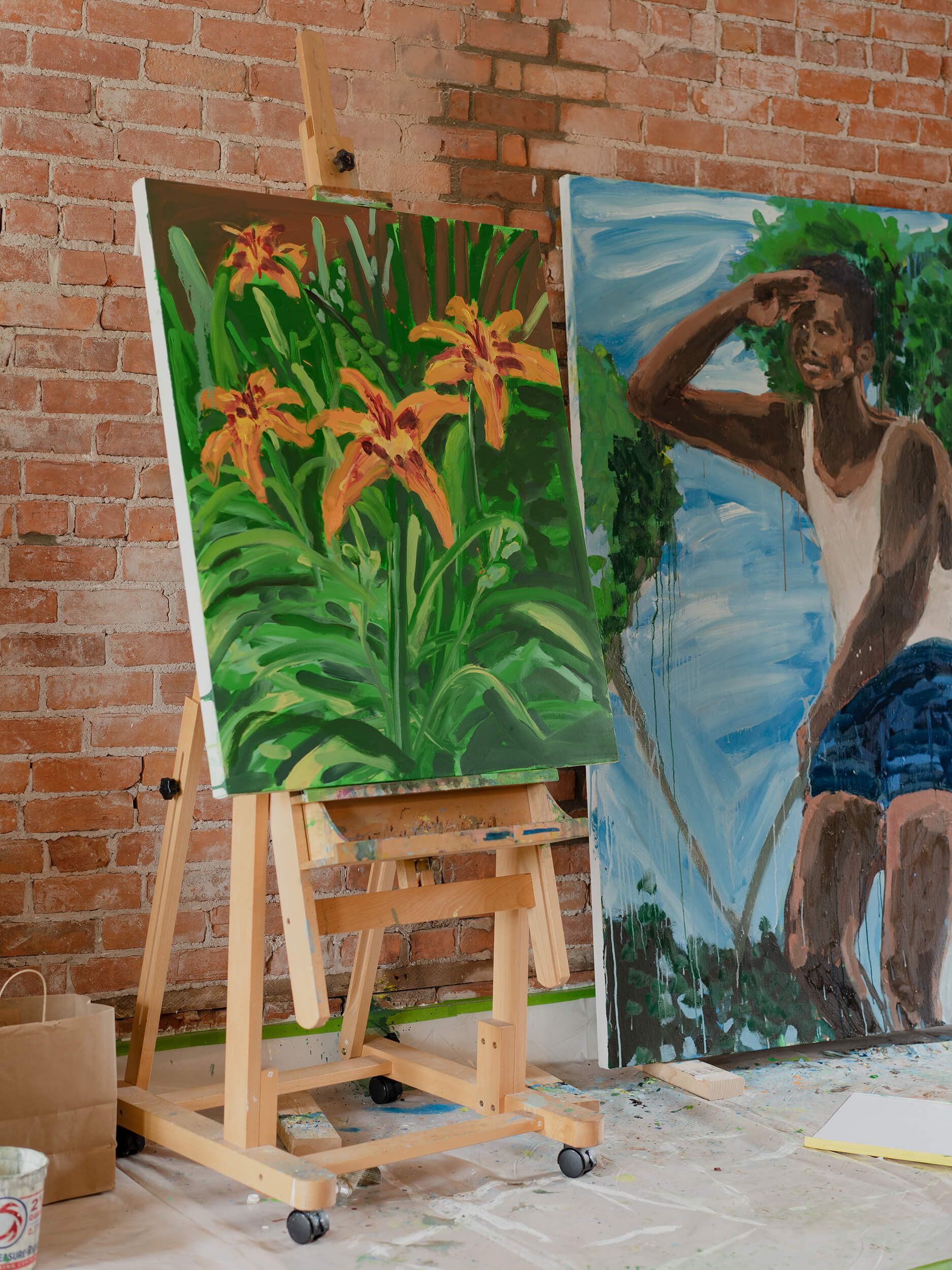
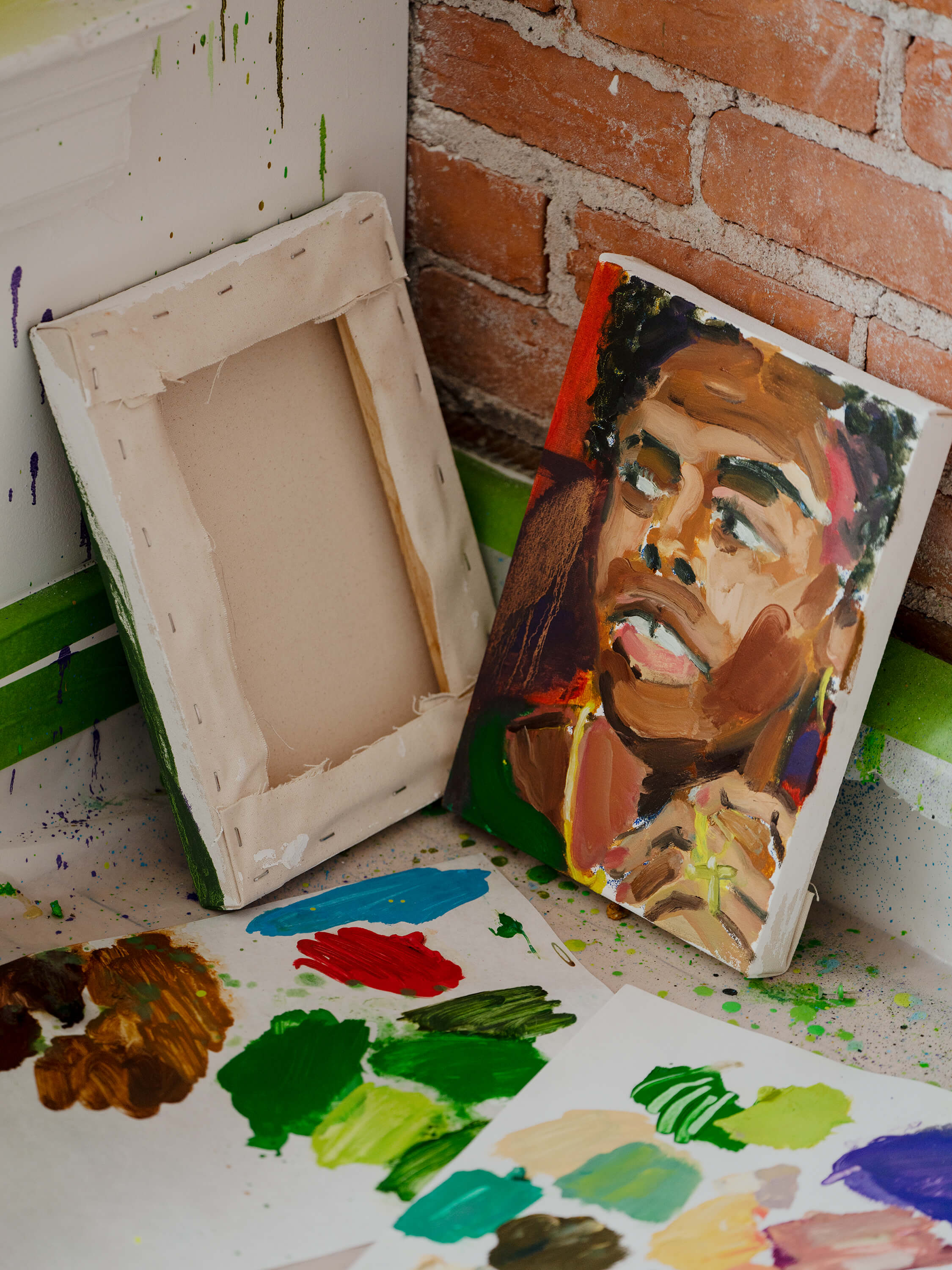
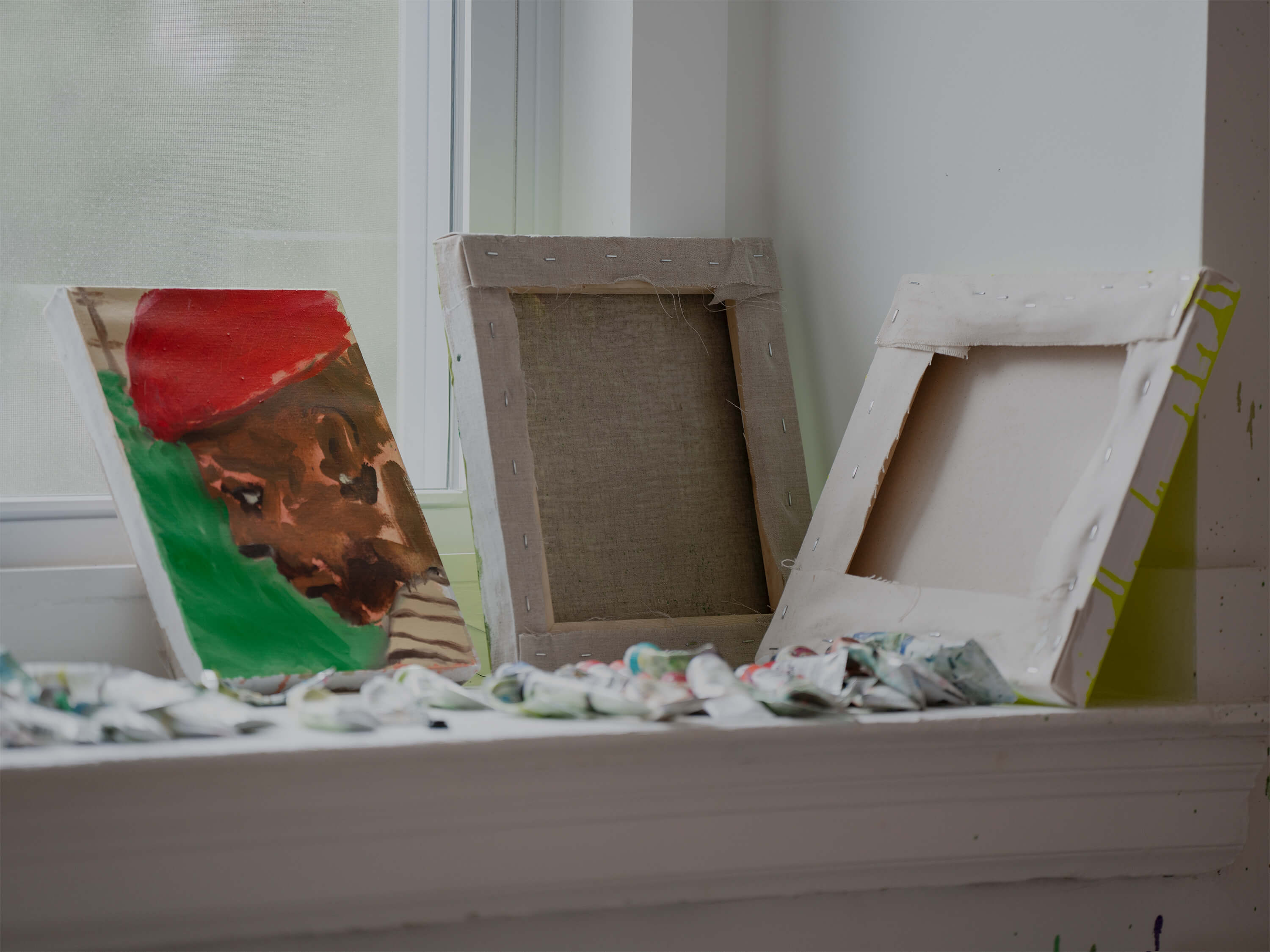
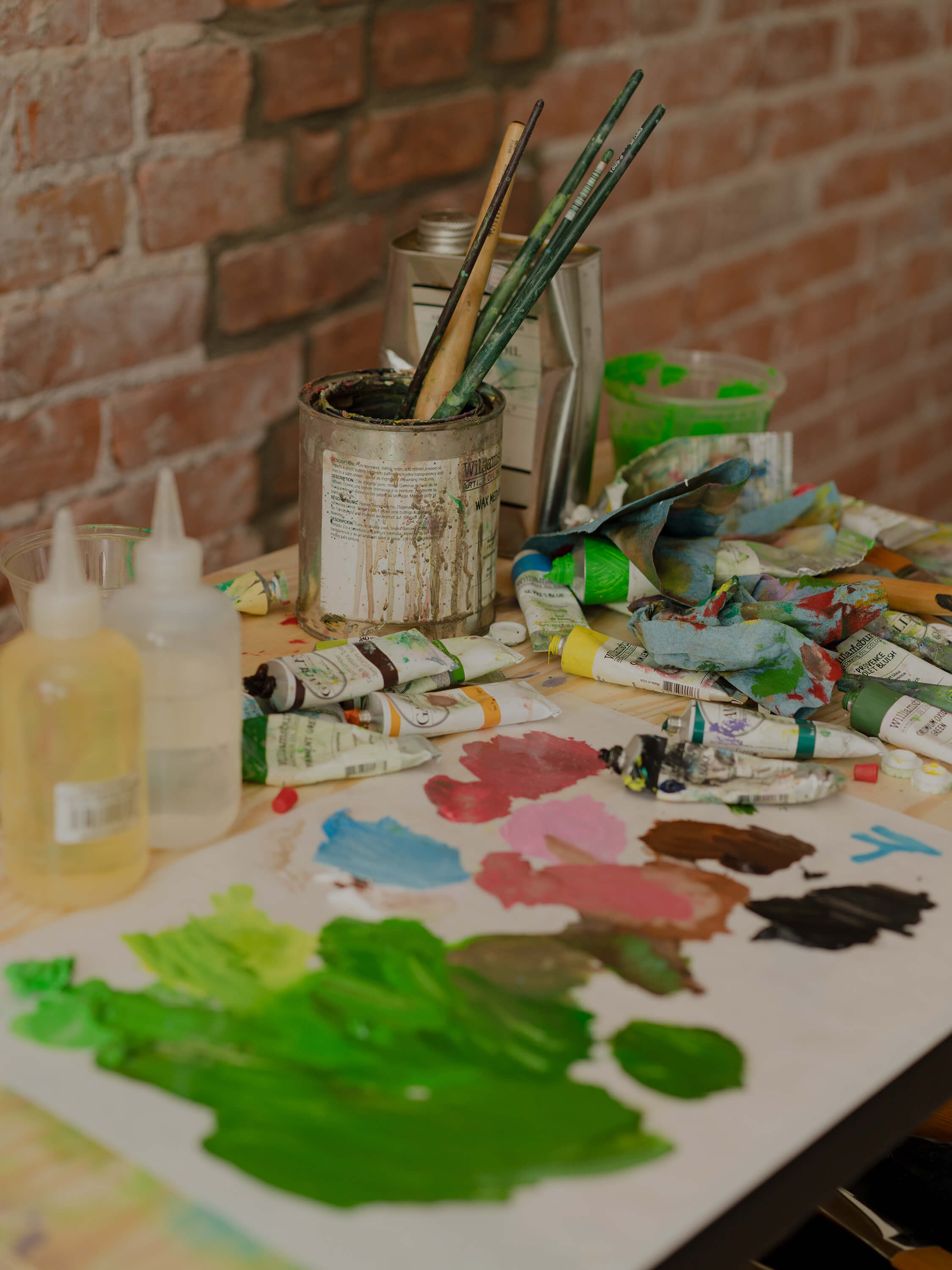
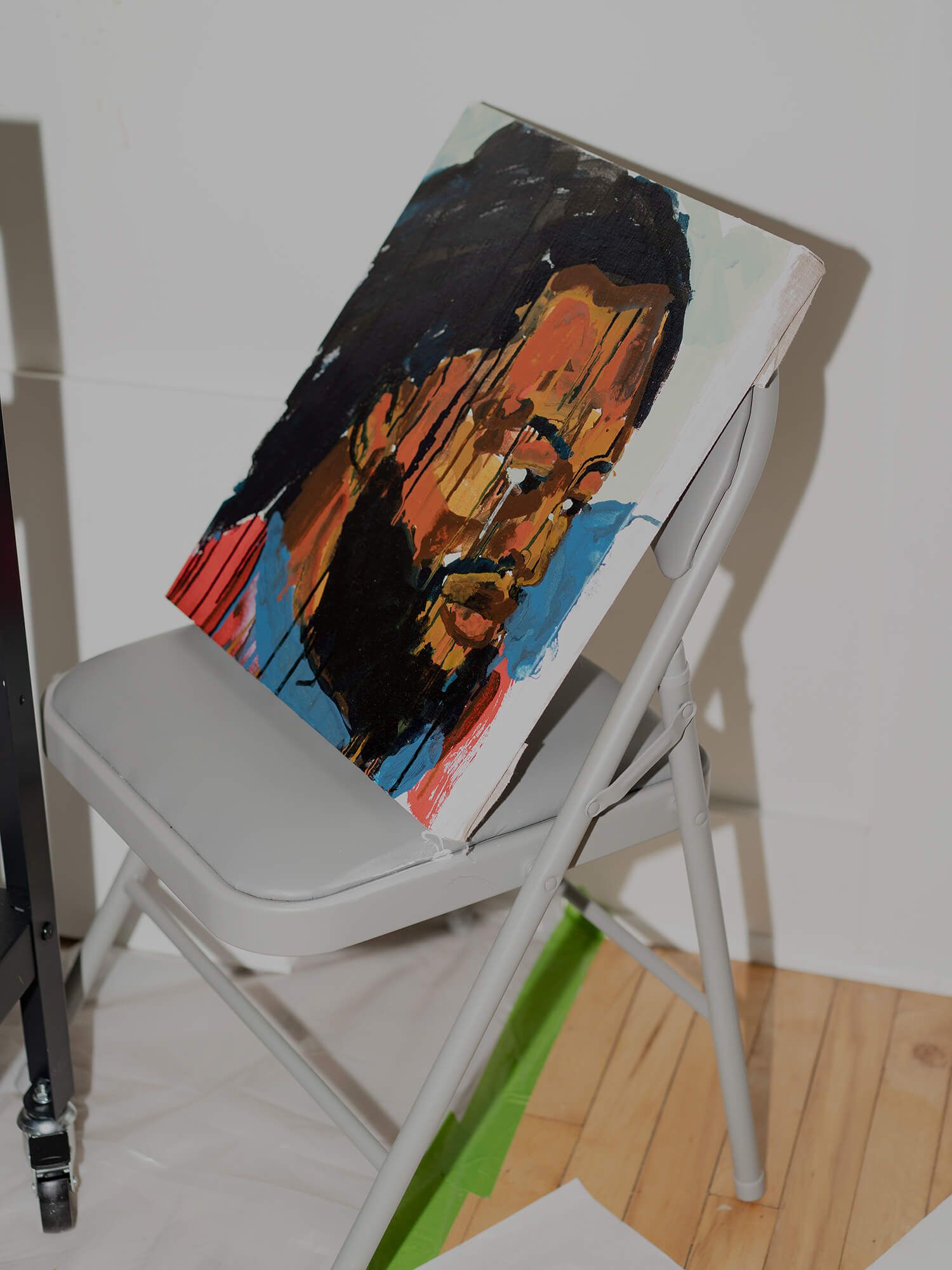
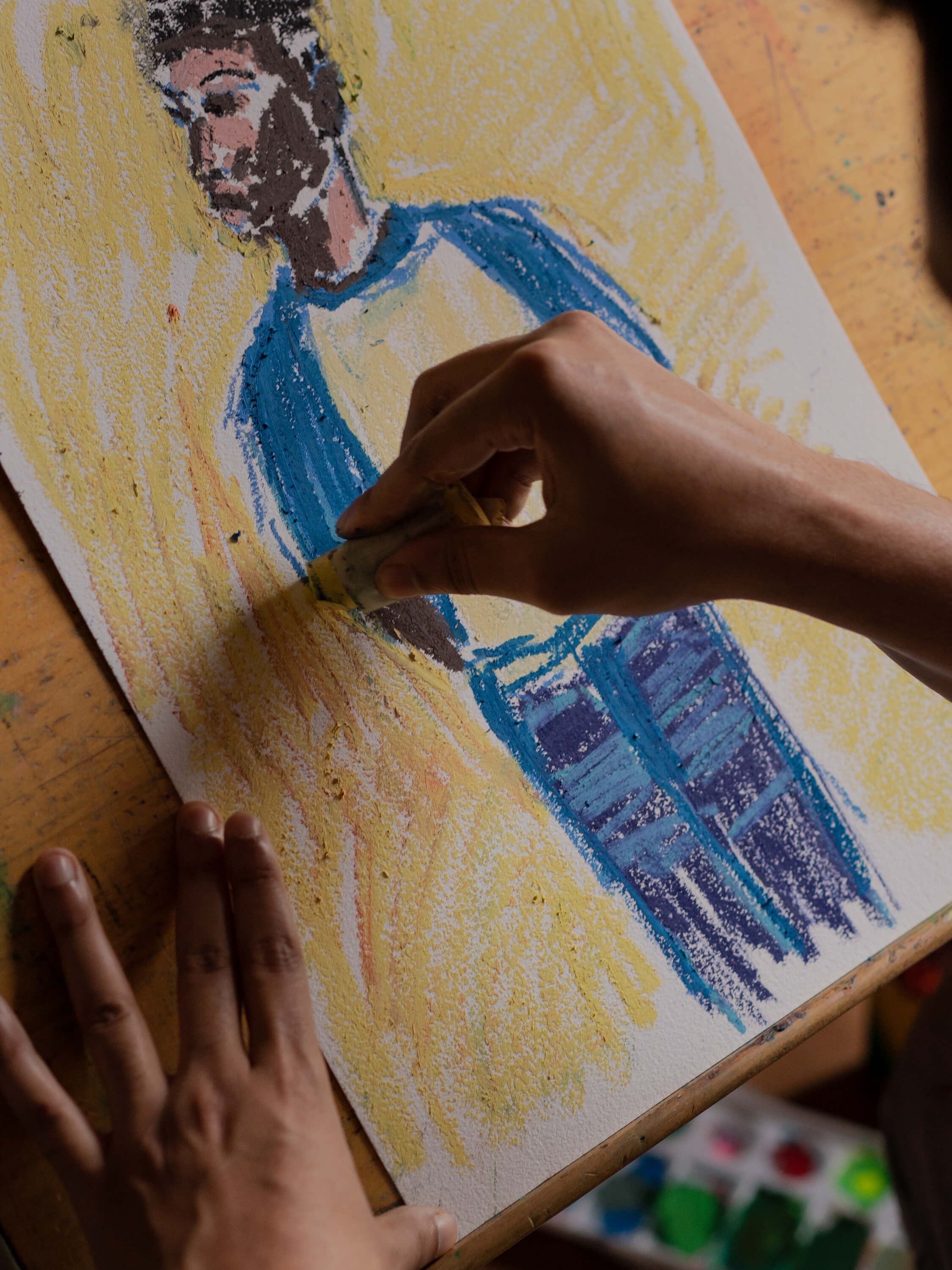
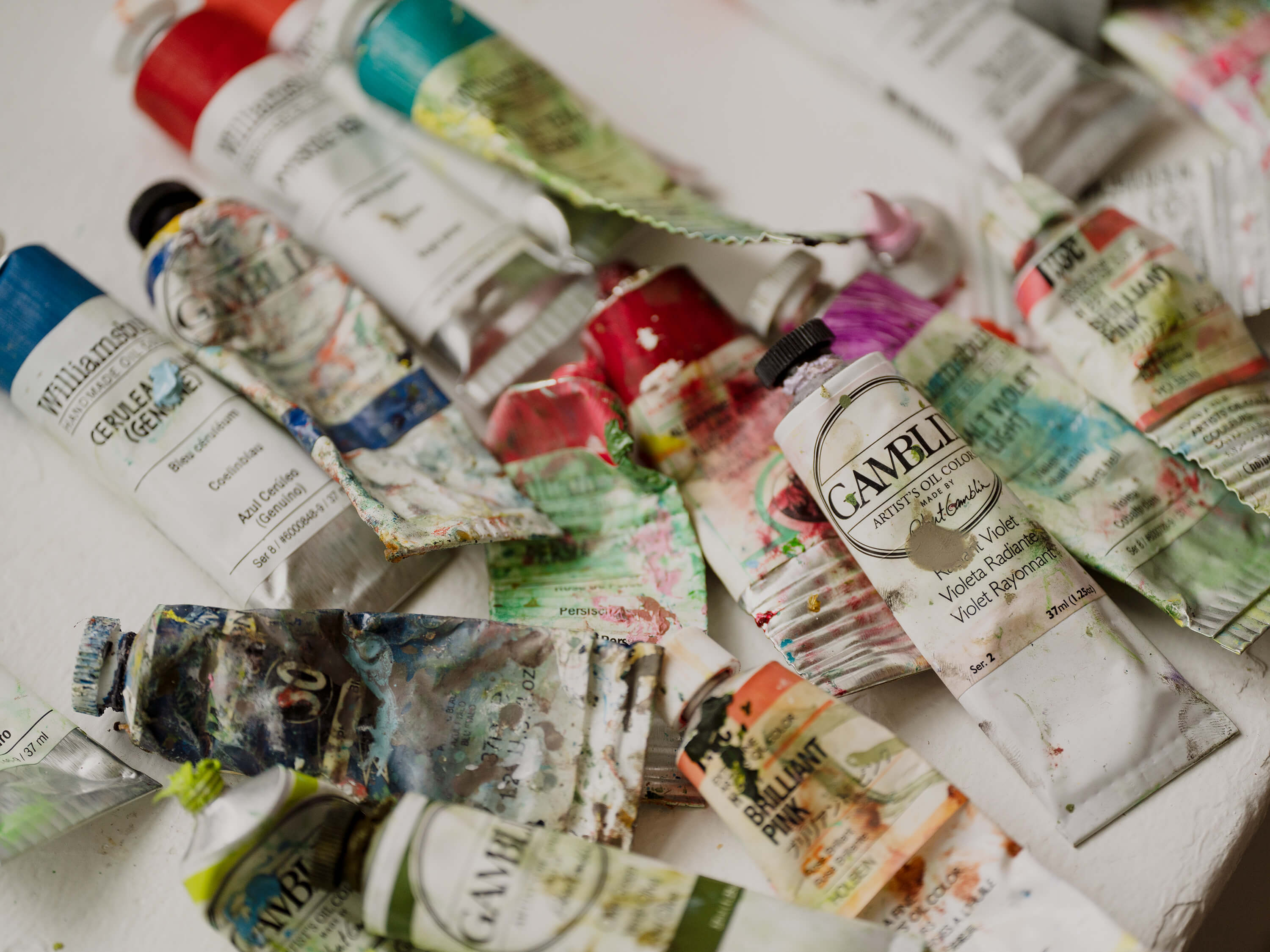
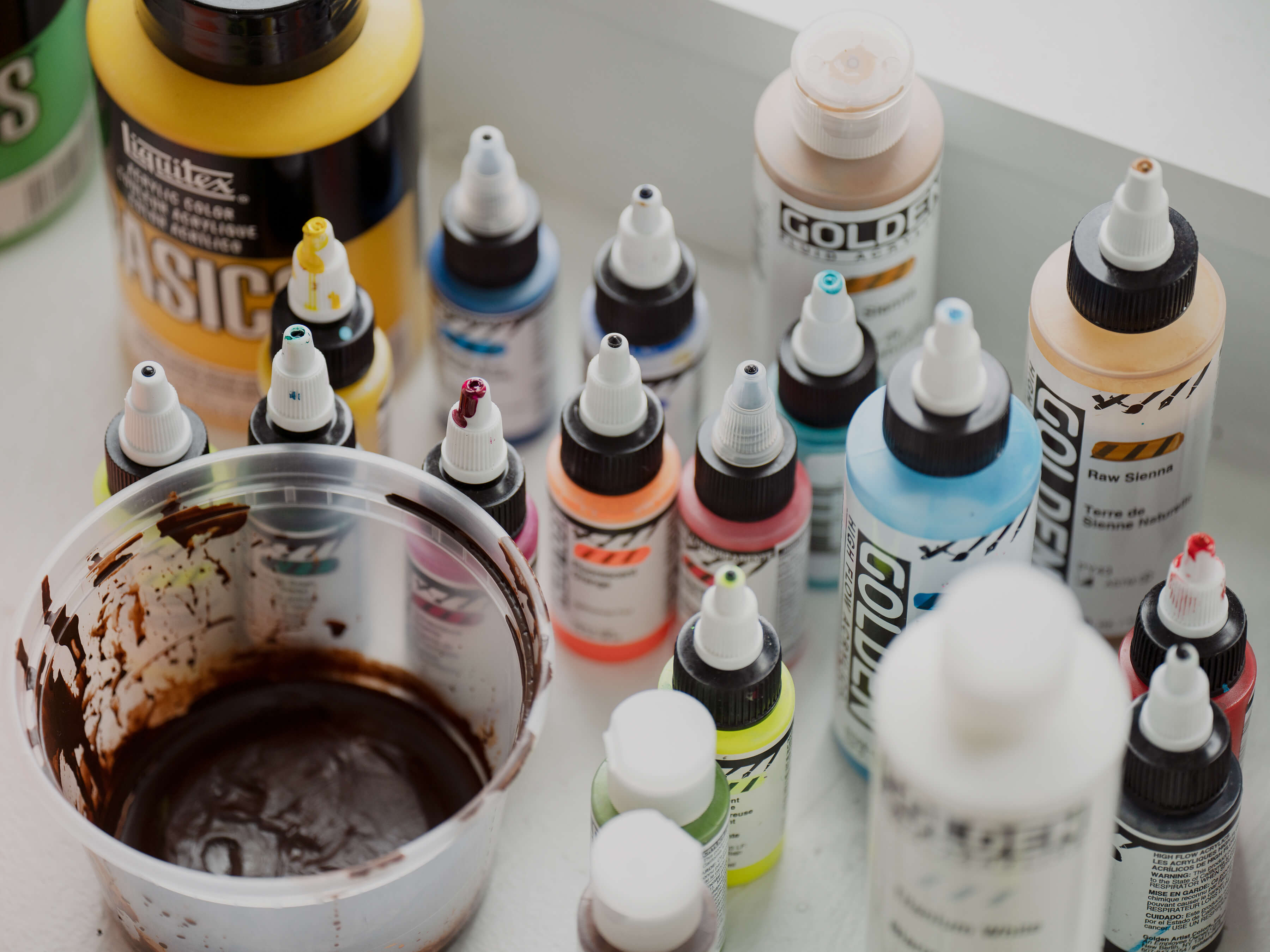

READING LIST
Jack Whitten: Notes from the Woodshed, Beauford Delaney and James Baldwin: Through the Unusual Door, Henry Taylor: The Only Portrait I Ever Painted of My Momma Was Stolen, Sarah Whitfield: Fauvism, Shirt Kings: Pioneers of Hip Hop Fashion